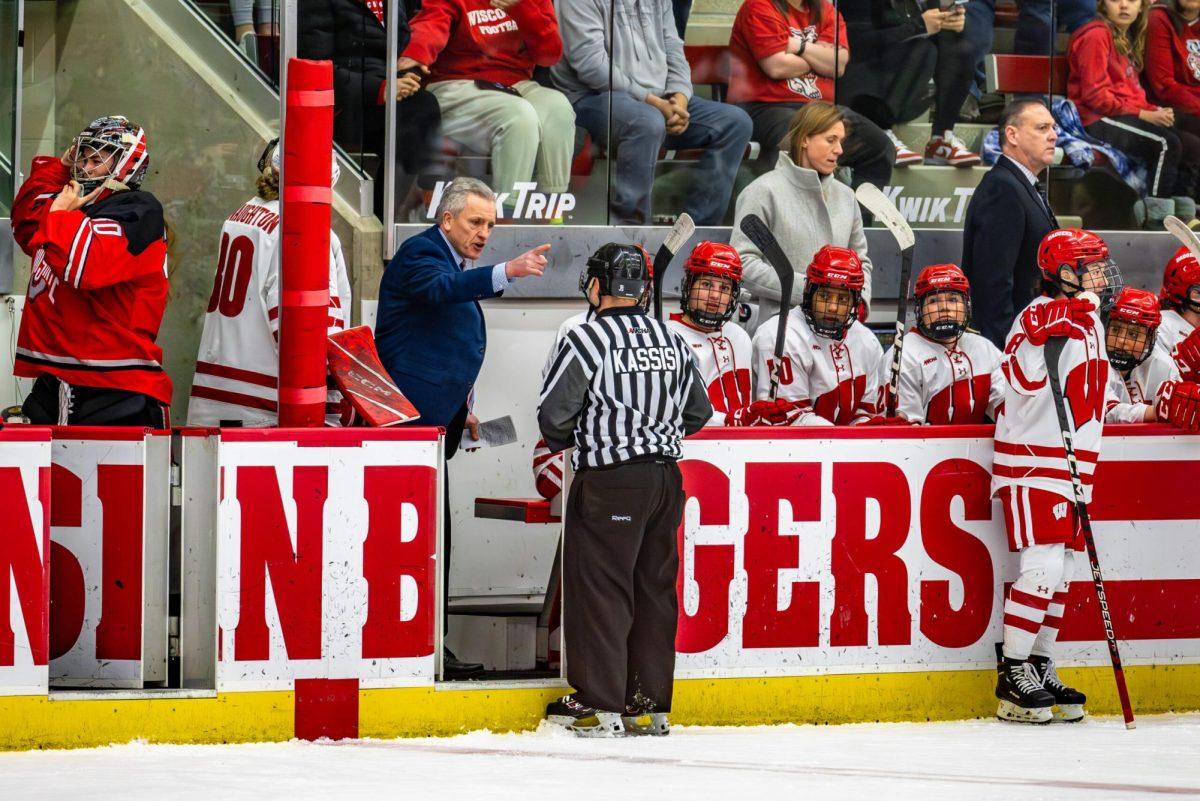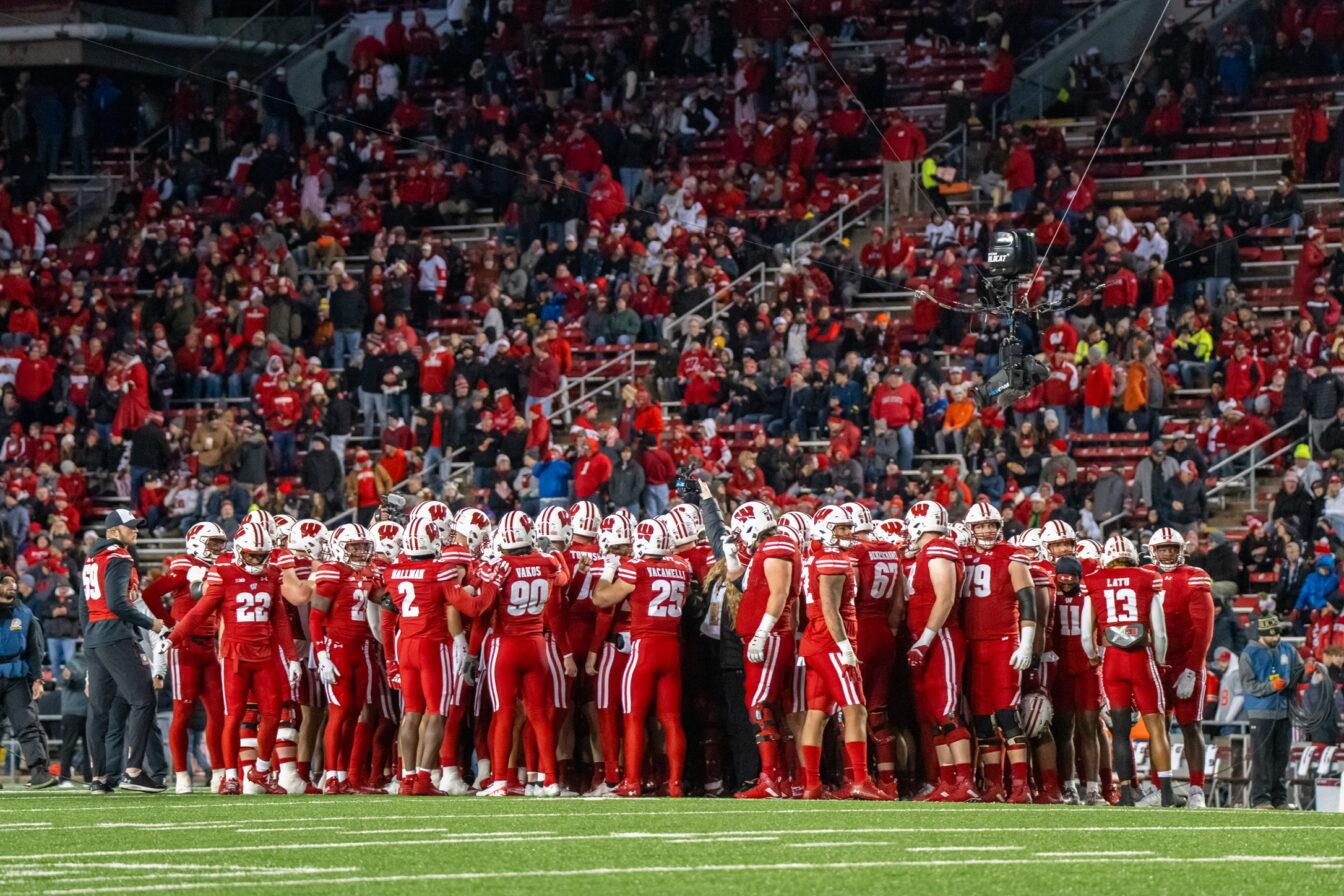What’s soft, round, and pretty much the hottest thing going in basketball?
Vin Baker? George Karl? An un-retired Charles Barkley?
Nope. It’s the headband, that cotton conglomeration that has made a serious resurgence among the stylish in both the NBA and college ball.
Nothing in basketball, with the possibility of Scott Pollard’s haircut, is more of an enigma than the headband. The headband is more than just the sweat-absorber it was designed to be. There’s just no telling what will happen when a team of players dons those colored rings of cotton. Headbands have brought teams together and driven other squads apart. They’ve been used both as a show of solidarity and to set oneself apart from their teammates and competitors.
The headband is a statement, a cry for attention, a unifying garment, a meltdown just waiting to happen.
The headband craze started with Slick Watts, the Seattle guard of yore who was the first to wrap his bald cranium in a green band. Back in Watts’ day, it seemed everyone in the league, even Bill Walton, was sporting a ridiculously oversized afro or wearing goggles or following Watts’ lead by rocking a headband.
Since then, the league’s fashion sense has been in Michael Jordan mode: short socks and bald heads. Boring. Apparently, though, we have returned to the golden age.
For years it seemed that only Chris Gatling wore a headband, and everybody made fun of him because of it. These days, everybody sports a headband, but everybody still makes fun of Chris Gatling. Guess it wasn’t just the headband.
Headbands set you apart, no question. By donning a headband, a player instantly becomes the focus of the crowd and of the opposing team. “Look at me!” they say. “I’m different and special and good!” And you’d better be.
“You have to have game,” Watts said recently about the NBA’s new wave of headbanded players. “There’s nothing more aggravating than seeing a guy wearing a headband and shooting airballs. If you’re going to make a statement, you’ve got to bring your lunch.”
Certain players have had trouble bringing their lunch while dealing with the extra attention brought on by headband-wearing. When Glenn Robinson tried the headband thing for a few weeks, he saw his point production plummet and watched his team lose six of nine games.
After getting yanked against Golden State for not boxing out, Big Dog flung his headband into the crowd, and he’s been strictly bald since. Since ridding himself of his headband hex in such public fashion, Dog has been averaging over 25 points per game, and the Bucks have won four of six.
Rasheed Wallace, a firm believer in headbands, received a technical for throwing his band to taunt Clippers players two weeks ago. Wallace, who doesn’t need props to pick up T’s, found his headband in time to beat the Clips and keep the Blazers’ winning streak going. Not surprisingly, Portland, whose starting two-guard Bonzi Wells also prefers the headband look, is the hottest team in the NBA, having won nine straight games.
As headbands become more prevalent, creative players must further distinguish themselves from the pack by inventing new ways to wear their bands. On the head and under the ears is standard; it can be seen on everyone from Jason Kapono to Nick Van Exel to BC’s Ryan Sidney. Big Dog, in his headband days, wore the band over his ears, a welcome change.
Anthony Mason made waves in the headband world when he unveiled his unique style: one side of his band over an ear and one side under. Don’t try this one at home, kids; only a guy as pretty as Mase can pull off such a fashion faux pas. And then there are those corporate logos to display. Upside down or logo side up, whether to put the emblem in front or back: these are all tough decisions faced by the headbanded masses.
For last season’s playoffs, the entire Charlotte Hornets squad, even ridiculous-looking seven-footer Elden Campbell, sported teal headbands for the playoffs to display their team unity for all to see.
The blue-bandeds tore through the Miami Heat for a first-round sweep before shocking everybody by taking a heavily favored but conspicuously un-headbanded Bucks squad to seven games before losing. After getting unexpectedly ousted by the Sixers in the conference finals, the Bucks realized they could only make it so far with their skills alone, and decided to slap on some bands this season.
Changing teams can change one’s feelings on the headband question. Former Celtics rookie Joe Johnson, who used to sport a team-colored green band, has been getting sweat in his eyes since getting dealt to Phoenix. Usually understated Tony Delk, part of the Johnson trade, only broke out the headband on rare occasions during stints with Phoenix, Sacramento, Golden State and (pre-headband) Charlotte.
Johnson must have forgotten his lucky band in his locker, because Delk has been sporting a Celtic-green headband since joining the team. Ditto for Rodney Rodgers, a former non-headband wearer also dealt in the Johnson/Delk trade.
Their change in style may not be the prerogative of the newcomers, however, as the entire Celtics squad often wears green bands to match their uniforms (man, it would be funny if Robert Parrish were still around). Since picking up the formerly headband-averse Delk and Rodgers and forcing them to sport bands, the Celtics, who thought they came out on top in the trade, have lost four straight.
Bo Ryan eliminated his team’s chance of any headband-related downfalls by disallowing any such fashion pieces before the start of the season. Wristbands, the shorter, fatter, not quite as outspoken cousin of the headband, were also on the Wisconsin coach’s list of banned items. The reason? Ryan just didn’t want his kids getting distracted by their articles of clothing.
Bucky Badger didn’t get Ryan’s memo, apparently. Wisconsin’s biggest fan tromped around the Kohl Center at the Badgers’ final home game with a headband composed of athletic tape and emblazoned with an Adidas symbol wrapped around his furry head. Bucky gave Ryan’s reasoning for banning the bands some credence: a clearly preoccupied Bucky kept pointing his band out to any fan who would take a gander. Somehow the Badgers managed to overcome Bucky’s headband distractions, though; they destroyed Michigan 74-54.
Headbands don’t just stay on the basketball court anymore, either. The ever-stylish Allen Iverson often sports a camouflage band at press conferences. Deion Sanders and Jim McMahon, regretting they had chosen a profession in which a traditionally worn headband would be rendered invisible by their helmets, slid their bands down around their necks during their playing days to produce the most ridiculous-looking fashion statement ever. Okay, so Deion could pull it off, but Super Bowl Shuffle McMahon? C’mon. Let’s just hope that one doesn’t catch on anytime soon.
So after all this discussion of their pros and cons, what exactly have we discovered about headbands? That they have a loyal following is obvious. Their attention-drawing capabilities are undeniable. They probably even keep sweat out of players’ eyes. But do headbands really affect performance one way or the other?
I guess you just have to throw one on and find out.














